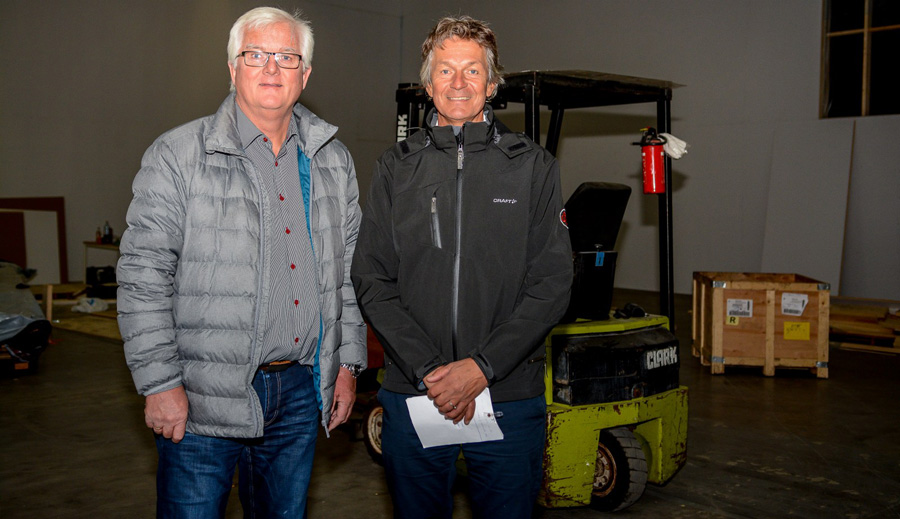Text and photo: Thor Kenneth Løvenfalck/Østlands-Posten
In 2013, Norway’s first food bank opened in Oslo. Since then, new food banks have popped up all over the country, and the latest addition is the Vestfold and Telemark food bank.
A 400m2 facility in Hegdal, Larvik, is about to become a redistribution centre for food that otherwise would have been thrown out.
“The food bank has two main goals. One is to reduce food waste, taking on the challenge of surplus food. The other is to help people in need. There are other organisations distributing food already, but we want to help increase the volume and make surplus food easier to access,” says Thorgeir Nybo, general manager at Vestfold and Telemark Food Bank.
Backed by four organisations
Nybo is the general manager at Vestfold and Telemark Food Bank and has previously worked for the Salvation Army. Behind this initiative, alongside the Salvation Army, are the Church City Mission, Kristen Besøkstjeneste, and the charitable foundation Evangeliesenteret.
“We don’t distribute food to individuals, we distribute to the organisations who already have established this type of service. The idea is that these organisations will come to Hegdal to collect food, and not only on a regular basis, but also for single events, like Christmas,” Nybo explains.
The food is for the most part surplus food from producers and wholesalers.
“It can be food that hasn’t been sold, for example hot dogs that weren’t sold over the summer, or food that has been mislabelled,” Nybo informs.
“This is food that otherwise might have been thrown away or used for animal feed.”
Every eighth bag of groceries is thrown away
Food waste is a considerable problem today. In 2016, 355,000 tonnes of food were thrown away by Norwegian food industry, wholesalers, grocery stores and households. This equals 68.7 kilos per citizen.
An average household throws away food worth 5,800 kroner every year. Of all the food in Norwegian households, 13 per cent – or every eighth grocery bag – ends up being thrown away.
Thanks to contributions from regional food banks, non-profit organisations can make better use of surplus food in their work with struggling persons and families.
The problem with food waste goes beyond Norway. The food bank concept exists in 36 countries. In Norway alone, more than half a million people are living below the EU-defined poverty line. In 2017, the food bank in Oslo redistributed food equal to 2.4 million meals.
“The work that’s already being done today shows that the need for it is great. Even for those receiving help from NAV, the economic leeway provided by a food bank is of great help. And hopefully, we can contribute to providing more food for redistribution, and a steady supply,” says Nybo.

ALMOST READY: The 400m2 industrial space in Hegdal is almost ready for use. The food bank and general manager Thorgeir Nybo (left) rentthe space from Dag Klettum and Søndre Eiendom AS. Photo: Thor Kenneth Løvenfalck
Volunteers needed
In Hegdal, the preparation of the food bank’s premises is almost done, much thanks to a set of benefactors. The initiative for the first food bank in Norway came from the food retail industry itself, and in Hegdal, the grocery wholesaling group Norgesgruppen funds the construction of coolers and freezers to safely store the food.
Since this is a non-profit, Nybo and the others are completely dependent on these kinds of contributions.
“We have three sources of funds. We have applied for quite a few grants, and the Kavli Trust has been absolutely instrumental in enabling us to go ahead with the project. Without them, we would not have come this far at this point in time,” he says.
“In addition, we’ve written to all municipalities in Vestfold and Telemark, including the two county municipalities, and we’re hoping for a contribution from them. Lastly, we receive funds from the producers themselves.”
Nybo hopes that the food bank in the region is up and running in December. He ends the interview with a call to action:
“We need volunteers to drive forklifts, to label food, and to transport food. The food bank budget includes one full-time and one part-time paid position, so the need for volunteers is great.”
This story is reproduced with permission from Østlandsposten. You can read the story in its original publication here.


